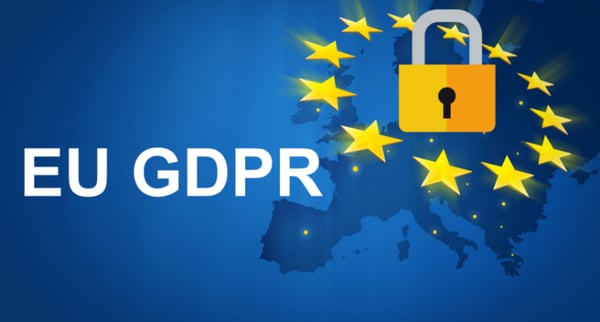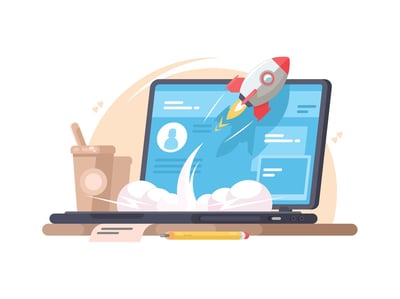If you started using a CRM without a strategy in mind and in place at the beginning or tried copying someone else’s CRM strategy or find yourself frequently shifting “strategy”, you need to read this blog because we have work to do!
Unfortunately, there’s no one size fits all approach to CRM. However, there are building blocks you can apply to any business and any stage of growth. With a sound CRM strategy in place, your business will be able to propel forward with better data, more insights, less friction, more revenue. Let’s get started!
Change Management
Change management is building block number 1 and one that is easily overlooked. Even if you had the best CRM strategy and there are no change management plans in place to ensure that team members will adopt best practices and follow processes moving forward, you’ll be back to square one sooner or later.
Keep in mind that change is inevitable with new technology, processes, workflows, team structure and business operations. Especially when you’re adopting a new CRM and strategy to enhance processes and data. It takes time to get used to new processes and for the wider team to see how it can and will benefit them. Change management becomes even more critical when you have different teams using the CRM - for example, finance to review deals, customer success to manage onboarding etc.
If you want to ensure longevity and data integrity of your investment in CRM, don’t skip this block.
Define What Success Means To You
I often find businesses get (too) excited about the implementation of CRM - without first defining what actual CRM success means to them. It’s easy to overlook this because it’s so much more rewarding to “just get started” or feel the pressure of adopting the CRM immediately and getting the team working on it.
But if you don’t know what you’re working towards or what you want out of the CRM, how could you ever build a strategy that gets the team there not just in the short term but the longer term? I would define what success means to each team and department and how it aligns with business revenue. Revenue is key - after all, cash flow is king.
So here are some food for thought: Consider how the new CRM strategy will enhance team managers and the individuals workflow, what tasks should be automated, how can productivity improve and cut out admin work, what kind of insights or data can help drive the business forward, what does accountability look like and how can we maintain data integrity without having the team do too much data entry.
Conduct Gap Analysis
Now that you know what success looks like to you, evaluate where the team and company is at currently and work out the steps in between to identify areas for improvement. Heads up, it’s going to be uncomfortable.
Conducting a gap analysis is important for the CRM strategy piece to even come together to know what to actually work on. To get you started, review the current sales process and identify issues, quality of the marketing generated leads, the hand off between teams, are your systems “talking” to each other, what data are you missing or unable to retrieve and which areas are the teams spending unnecessary time on.
Have Business Processes
Once you’ve set the goals, building block number 4 is getting clear on your business processes will be necessary. Whilst there will be changes and improvements, identifying and understanding the parts of business processes you want to automate and parts that have to maintain the way it’s working right now. This will help to set parameters on what the CRM strategy will look like and also help prioritise CRM implementation roll-out.
You want your sales and customer service/success reps to be focused on their core purpose of engaging with customers, solving issues quickly and effectively, prospecting, closing sales not data entry and lengthy administrative processes that well, doesn’t generate revenue at all. That’s what a good CRM strategy and software should do. Let the system work for you!
The more the processes can be automated and designed to guide users to the next best action for each customer (think HubSpot playbooks!), the higher the CRM adoption rate and longevity.
Clean Your Data Up
Don’t dump a whole lot of data in your new CRM where possible, please! This is one of the biggest no-no.
Take the time to review the data you have before any CRM migration. Are there duplicates? Are they in the right formats? How many invalid email addresses do you have in there? What information or insight will you get from the data you have currently? Are the teams currently confused about which data they can trust?
I’d also highly recommend appointing 2-3 people in the company that will be responsible for regulating what data gets entered and mapped in the CRM and managing the CRM. Too many cooks in the kitchen spoils the broth!
Integrate Your Systems
The next building block is systems integration. It’s uncommon for businesses to get their data from only one source and only ever use one software to run the whole business. But there’s nothing worse than having to jump from software to software just to retrieve information.
I’d recommend considering what systems and softwares you’d like integrated and what is the expected outcome from that integration. The reason being that some integrations may be natively available, custom-coded or custom via third party integrators such as PieSync or Automate.io. They’re not created equal so once we get clear on what you want to achieve, we can choose the best method for you.
Some integrations you might want to consider are your accounting system (Xero), proposal software (PandaDoc), online payments (Stripe), communication mediums (WhatsApp) and much more.
CRM Ongoing Management & Review
To ensure your CRM strategy is solid now and for the long term, remember that it’s not as “done and dusted” project. It’s an ongoing project. As your business evolves, your CRM has to evolve as well. Otherwise, you’ll be updating processes without a CRM to support the growth. So don’t neglect this. Perhaps consider setting up regular meetings every quarter or so to review the CRM data.
Data Security & GDPR
Since we’re working with data and information about prospects and customers, it’s important to ensure there is a system or process to maintain and manage data security. This means do not sell or trade data without the users’ consent, collect data that users have explicitly given and collect website traffic of users only if they again have opted into. In a GDPR world, it has never been more important!
This leads us back to the data cleanse building block whereby you should not import data that isn’t yours to keep! Perhaps run an “reactivation” email to tell users to update their subscription preferences or they’ll be removed from the database and be extremely careful with the level of access that each user will have. So these are some of the processes that should be in place.
If you are moving or using a software like HubSpot, you’re in luck. HubSpot is designed to help businesses be more GDPR-friendly.

Training & Support
Last but not least, the ninth building block is ongoing training and support. Since implementing a new CRM strategy, adopting a new software or altering existing business processes will ultimately come with change, personalised training is essential.
For marketing teams, show them how they can still achieve what they used to do i.e. list segmentation, email marketing, building reports. For sales teams, teach them how they can leverage on the software to get the data they need to have more effective sales conversations, tools they can use to improve productivity and how the various teams share the same data. For managers, show them how with better CRM structure and the right software, they’ll have a better visibility on their team’s productivity and the numbers they report on. I think you get the picture!
So there you have it 9 building blocks that you can use when building your CRM strategy and roadmap. It can be useful to get a third party involved who knows the CRM you’re adopting inside out so that they can build a strategy and implementation plan that is tailored for your business in a way that also maximises the software capabilities. If you are looking to move to HubSpot and want to maximise your CRM, let’s chat!



